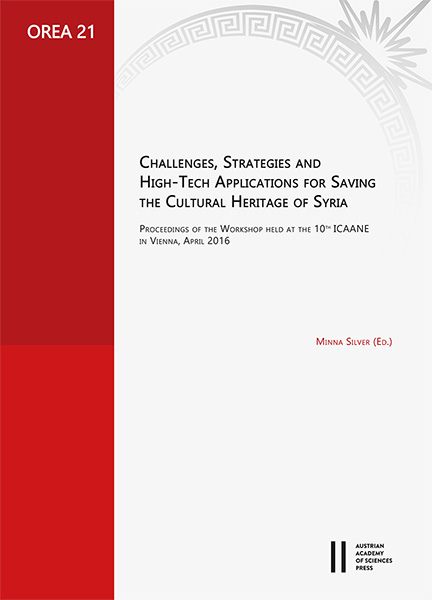
Challenges, Strategies and High-Tech Applications for Saving the Cultural Heritage of Syria, pp. 213-226, 2022/03/24
Proceedings of the Workshop held at the 10th ICAANE in Vienna, April 2016
All six of the Syrian World Heritage properties were inscribed on the List of World Heritage in Danger in the37th session of the World Heritage Committee, held in Cambodia in June 2014: the ancient city of Aleppo; the ancientcity of Bosra; the ancient city of Damascus; the ancient villages of northern Syria, Crac des Chevaliers and Qal’at SalahEl-Din, and finally, the site of Palmyra. Apart from the ancient villages of northern Syria, Fangi has visited all the worldheritage sites and partly documented them In 2010, just before the war, Gabriele Fangi made a trip together with Crua(the Recreational Club of Ancona University) It was the occasion to ensure rapid documentation of some monumentsbelonging to the Syrian cultural heritage (CH) The images were mostly taken by Fangi The purpose was not to makea survey but to obtain a photographic report, as fast and complete as possible Nevertheless, Fangi carried out the threemost important surveys – the Aleppo minaret, the Aleppo citadel walls and the Umayyad Mosque in Damascus – in arigorous manner, following the 4 × 4 CIPA rules Syria is a country of many civilisations: Amorite, Aramean, Phoenician,Greek, Roman, Byzantine, Islamic and Ottoman Consequently, it is full of cultural heritage remains Unfortunately,many of them have been destroyed by the war, as well as hundreds of thousands of civilian people having been killedHowever, some of the photographs were originally taken in such a touristic way that our work required finding someusable plotting as 3D restitutions That worked successfully most of the time These surveys could be useful in the case ofreconstruction and where there is a lack of suitable alternative forms of metric documentation We built up a database ofthe available material to organise historic information, the localisation and the state of the buildings It was the occasionto define a collection of data and store it in a dedicated database for every cultural heritage remain, to retrieve in anautomatic way a single report to link a 3D model shared in a dedicated project on the internet.
Keywords: Syrian cultural heritage; war; emergency; spherical photogrammetry; 3D model; database